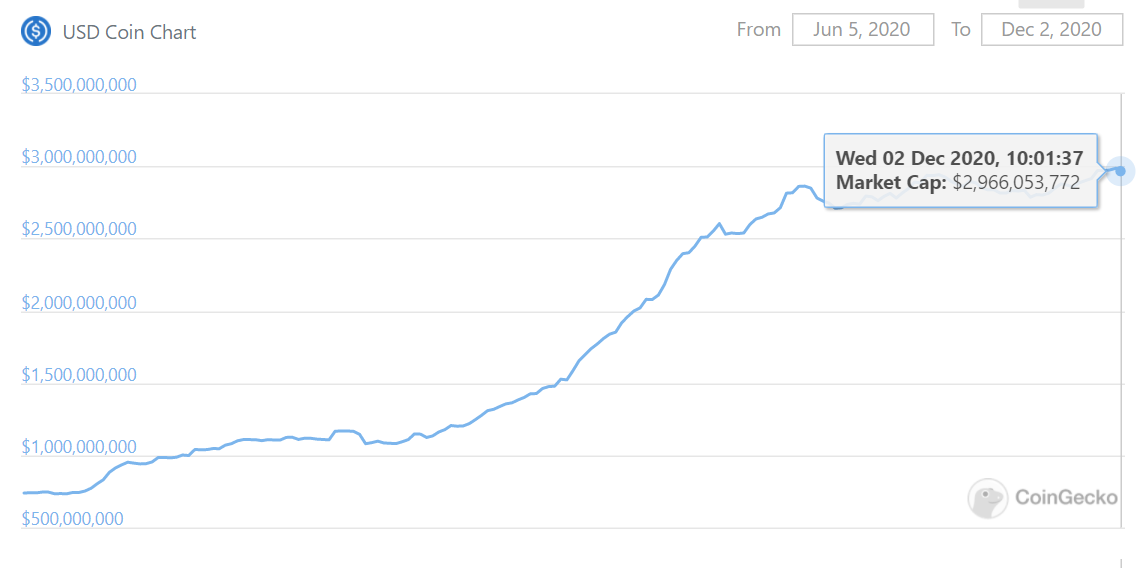Visa Comes Full Circle With USDC Stablecoin Integration
3 min readThe “King” of the credit card industry, Visa, has partnered with Circle to use USDC on Ethereum. And more digital integration is on the horizon.
Coming Full Circle
While volatility in crypto has kept some payment companies at bay, Visa has plunged in to connect Visa’s payment system with USD Coin (USDC). USDC was developed by Circle, a company that specializes in digital payments.
Though users trade crypto and make payments using the Circle app, the Visa partnership will focus its efforts on USDC. The stablecoin, which runs on the Ethereum blockchain, has a total market cap of $2.9 billion. Each USDC is pegged to a US dollar and is backed one to one.

This new partnership will see Circle working with Visa to help integrate USDC into the card company’s platforms. Circle will also integrate its app with Visa processing, and the two companies hope this will result in fast, cheap (and potentially international) payments.
In theory, USDC could be sent anywhere in the world where Visa is accepted. Furthermore, once the “Fast Track” program is complete, Visa will issue a credit card that will allow for cardless USDC payments.
Though bitcoin has been called a store of value, the adoption of a non-volatile asset on the blockchain has been elusive. Could this card fill this gap?
The USDC team also promises to implement a Layer-2 solution that will drastically reduce or even eliminate fees. Another claimed advantage is the zero-purchase fees via the Coinbase exchange. This potentially makes it easy for USDC transfers in and out of bank accounts.
“This will be the first, corporate card that will allow businesses to be able to spend a balance of USDC,” said Visa head of crypto Cuy Sheffield.
Tipping the Scales
On the technology side, USDC runs on the Ethereum blockchain which recently launched the genesis block of version 2.0. This new proof-of-stake version of the blockchain could end congestion in the network and lower fees.
Likewise, ETH2 intends to scale massively to many, many nodes, rather than a few centralized companies.
More Than a Visa
Recently, Visa has shown more interest in digital currencies. The company invested $40 million in Anchorage, a crypto startup. “Continue to think of Visa as a network of networks,” said Sheffield. He suggested that Visa may expand to other stablecoins or other blockchain networks.
Sheffield described Anchorage as possibly crucial to Central Bank Digital Currencies (CBDC). Should the US Treasury decide to release a digital dollar, Visa would likely be well-positioned to take advantage of it.
On Dec 1, 2020, the crypto provider BlockFi announced that it will launch a bitcoin rewards Visa card next year. The “Fast Track” program has also seen a number of partnerships with other cryptocurrencies, such as Fold and Cred.
Presently, Visa estimates that about $120 trillion of payments are made using wire transfers and checks, which can cost $50 each. On the Ethereum blockchain, these costs would be much lower and could be confirmed in seconds.
The post Visa Comes Full Circle With USDC Stablecoin Integration appeared first on BeInCrypto.





![Decentraland: Review & Beginner's Guide [current_date format=Y] 20 Decentraland: Review & Beginner's Guide](https://cryptheory.org/wp-content/uploads/2020/11/decentraland-02-gID_7-300x150.jpg)